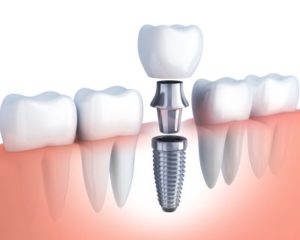Ceramic braces work in the same way as traditional metal braces. They align, straighten and adjust teeth. Ceramic braces have become increasingly popular recently due to them being less noticeable on the teeth. However, there are notable differences between traditional metal braces and ceramic braces. This blog will give you an overview of everything you need to know about the orthodontic speciality service of ceramic braces to make an informed decision.
What Are Ceramic Braces?
When you think about the main purpose of braces, they’re put in place to adjust the position of the teeth for different dental reasons. Ceramic braces work in the same way as traditional metal braces, over time pulling the teeth into different positions.
How does this work exactly?
Well, the braces brackets are bonded to the surface of the patient’s teeth. These brackets can be made of stainless steel, ceramic, or other materials. The wire arch controls the movement of the teeth and connects the brackets and the bands together. Though they may work in a similar fashion as traditional metal braces, ceramic braces do come with their own set of pros and cons. Let’s dive deeper into what these are.
Pros and Cons of Ceramic Braces
Ready to find out all the pros and cons of ceramic braces, especially compared to traditional metal braces? Let’s go!
Pro: Less visible
One of the biggest benefits of ceramic braces is that the ceramic material used in these braces can be either clear or tooth-colored, making them much less obvious.
Pro: Move teeth faster
Ceramic braces can move teeth faster than clear aligners. Ceramic braces take, on average, between 18 to 36 months to straighten your teeth. Popular methods of straightening teeth like Invisalign can take a year or more, even if your teeth don’t need much correction.
Pro: No interference with X-Rays
Metal braces can interfere with signals during imaging studies, synch as MRIs or conventional X-rays, while ceramic braces produce much less signal interference!
Con: More expensive
With all their pros, probably one of the biggest cons is that the cost of ceramic braces is significantly more than metal braces. You are potentially looking at between $800 – $2,000 more.
Con: Tooth sensitivity and staining
Because ceramic brackets are larger than metal brackets, this can make cleaning around the brackets more difficult which can lead to swollen gums or gum recession. A question that’s often asked is “do ceramic braces stain?” When it comes to staining, the elastic bands that attach the wire to the brackets can easily discolor and remain discolored until they’re replaced.
Con: Slightly less durable
Ceramic braces are also slightly less durable than metal. Ceramic brackets are more than twice as likely to chip or break. It’s also known that removing the adhesive (known as debonding) can damage the tooth surface or enamel.
Who’s a Good Candidate for Ceramic Braces?
If all of your adult teeth have come in and you have mostly stopped growing, ceramic braces might be a good option for you. By making sure your tooth growth is at its peak, you can be guaranteed a speedy correction and a reduced risk of brackets breaking as a result of the pressure of tooth movement.
Ceramic braces typically cost between $4,000 and $8,000, whilst metal braces may cost between $3,000 and $6,000.Treatments such as Invisalign cost between $3,000 and $8,000.
Ceramic braces are not commonly covered by health or dental insurance coverage, like other braces. Most likely, you’ll need to acquire a different orthodontic plan. Both for adults and children, these programs differ greatly by state. Remember, we offer various dental payment options for cases just like these, and we offer monthly payments as low as $99 per month for braces, if you’re eligible.
Even if your dental insurance covers orthodontic treatment, getting braces as an adult may not be reimbursed if you’re only using them for aesthetic purposes rather than to repair a severe dental issue that interferes with your ability to eat normally.
Compared to less than a year to three years for metal braces, ceramic braces take around a year and a half to straighten teeth.
Because ceramic braces are less strong, more brackets need to be changed when your teeth move in order to prevent them from breaking. This causes a longer adjustment period.
Due to delays in straightening between visits to the orthodontist to correct broken brackets, the straightening process may take longer with ceramic brackets because they break more frequently.
Are Ceramic Braces Better for the Teeth?
In general, ceramic braces have the same effect on teeth as conventional metal braces. They both function the same way and yield comparable outcomes.
Ceramic braces are less durable than conventional metal braces though. And, the brackets may need to be changed more frequently by an orthodontist if they break. Regular braces maintenance could put the tooth’s enamel under additional strain or harm. However, if someone takes care of their braces well, this is unlikely to occur.
Procedure for ceramic braces
Preparation
A person will meet with an orthodontist for a consultation prior to getting ceramic braces. They will perform a dental examination, review your x-rays, and create a treatment plan.
If the patient’s rear teeth are too close together, the orthodontist could decide to place spacers there. These make room so rubber bands can be wrapped around the teeth. For almost a week, the spacers will remain in place between the teeth.
Appointment
If necessary, the orthodontist will take the spacers out during the subsequent session. The braces will next start to be placed on the teeth.
An orthodontist will use a retractor to keep the mouth open in order to do this. The teeth are then treated with a solution, followed by rinsing. They will next start using a tiny drill to attach brackets to each tooth.
After placing brackets on each tooth, the orthodontist inserts the archwire through each bracket. The type of braces a person wears will determine how the wire is retained. Self-ligating braces grip the wire firmly in place with the aid of a clip inside the bracket. Rubber bands around each bracket in conventional braces hold the wire in place.
The orthodontist will fasten elastic bands to each bracket if the patient is receiving them. The orthodontist will then trim the wires so that the ends do not pierce the cheeks or gums.
Adjustments
The actual placement of braces takes between 10 to 30 minutes, and the process as a whole takes about 90 to 120 minutes. If someone has self-ligating braces, like we use at Jefferson Dental & Orthodontics, the device will gradually tighten and correct itself. An orthodontist will need to perform this during checks for other braces.
Removal
You might be prepared to have your braces removed in a matter of months, depending on your treatment plan. To fully address more serious tooth issues, patients typically need to wear braces for roughly 2 years. The bonding adhesive holding your brackets to your teeth will be softly broken down and the brackets will be gently removed once your orthodontist is satisfied with your new alignment.
Ready to meet with an orthodontist for your potential ceramic braces treatment? Schedule a free consultation today!
The post Pros & Cons Of Ceramic Braces appeared first on Jefferson Dental & Orthodontics.






